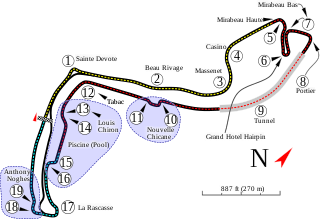
The Monaco Grand Prix is a Formula One motor racing event held annually on the Circuit de Monaco, in late May or early June. Run since 1929, it is widely considered to be one of the most important and prestigious automobile races in the world, and is one of the races—along with the Indianapolis 500 and the 24 Hours of Le Mans—that form the Triple Crown of Motorsport. The circuit has been called "an exceptional location of glamour and prestige". The Formula One event is usually held on the last weekend of May and is known as one of the largest weekends in auto racing, as the Formula One race occurs on the same Sunday as the Indianapolis 500 and the Coca-Cola 600.

A fossil is any preserved remains, impression, or trace of any once-living thing from a past geological age. Examples include bones, shells, exoskeletons, stone imprints of animals or microbes, objects preserved in amber, hair, petrified wood and DNA remnants. The totality of fossils is known as the fossil record.

Monaco, officially the Principality of Monaco, is a sovereign city-state and microstate on the French Riviera a few kilometres west of the Italian region of Liguria, in Western Europe, on the Mediterranean Sea. It is bordered by France to the north, east and west. The principality is home to 38,682 residents, of whom 9,486 are Monégasque nationals; it is widely recognised as one of the most expensive and wealthiest places in the world. The official language of the principality is French. In addition, Monégasque, Italian and English are spoken and understood by many residents.
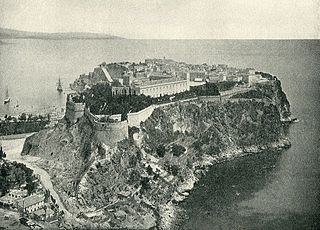
The early history of Monaco is primarily concerned with the protective and strategic value of the Rock of Monaco, the area's chief geological landmark, which served first as a shelter for ancient peoples and later as a fortress. Part of Liguria's history since the fall of the Roman Empire, from the 14th to the early 15th century the area was contested for primarily political reasons. Since that point, excepting a brief period of French occupation, it has remained steadily under the control of the House of Grimaldi.

Grace Patricia Kelly was an American actress who, after starring in several significant films in the early to mid-1950s, became Princess of Monaco by marrying Prince Rainier III in April 1956.
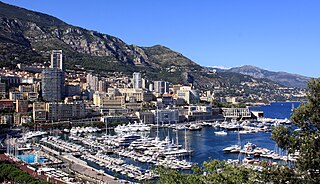
Monte Carlo is officially an administrative area of the Principality of Monaco, specifically the ward of Monte Carlo/Spélugues, where the Monte Carlo Casino is located. Informally, the name also refers to a larger district, the Monte Carlo Quarter, which besides Monte Carlo/Spélugues also includes the wards of La Rousse/Saint Roman, Larvotto/Bas Moulins and Saint Michel. The permanent population of the ward of Monte Carlo is about 3,500, while that of the quarter is about 15,000. Monaco has four traditional quarters. From west to east they are: Fontvieille, Monaco-Ville, La Condamine, and Monte Carlo.
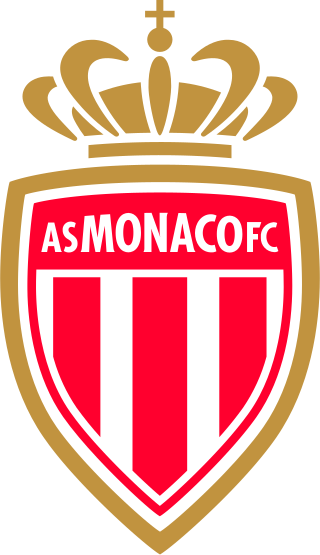
Association Sportive de Monaco Football Club SA, commonly referred to as AS Monaco, ASM or Monaco, is a Monégasque professional football club based in Fontvieille, Monaco. Although not in France, it is a member of the French Football Federation (FFF) and currently competes in Ligue 1, the top tier of French football. Founded in 1918, the team plays its home matches at the Stade Louis II. Its training center is situated in neighboring France, in la Turbie.
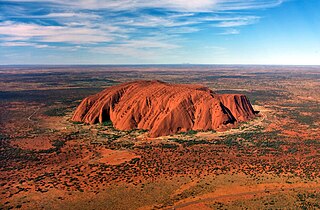
A monolith is a geological feature consisting of a single massive stone or rock, such as some mountains. For instance, Savandurga mountain is a monolith mountain in India. Erosion usually exposes the geological formations, which are often made of very hard and solid igneous or metamorphic rock. Some monoliths are volcanic plugs, solidified lava filling the vent of an extinct volcano.

Monaco City is the southcentral ward in the Principality of Monaco. Located on a headland that extends into the Mediterranean Sea, it is nicknamed The Rock. The name "Monaco City" is misleading: it is not itself a city, but a historical and statistical district. It holds most of the country's political and judicial institutions: the Prince's Palace, the town hall, the government, the National Council, the Municipal Council, the courts and a prison.

Circuit de Monaco is a 3.337 km (2.074 mi) street circuit laid out on the city streets of Monte Carlo and La Condamine around the harbour of the Principality of Monaco. It is commonly, and even officially, referred to as "Monte Carlo" because it is largely inside the Monte Carlo neighbourhood of Monaco.

Roquebrune-Cap-Martin is a commune in the Alpes-Maritimes department in the Provence-Alpes-Côte d'Azur region, Southeastern France, between Monaco and Menton. In 2018, it had a population of 12,824. The name was changed from Roquebrune to differentiate the town from Roquebrune-sur-Argens in neighbouring Var.

Natural Bridge is a geological formation in Rockbridge County, Virginia, comprising a 215-foot-high (66 m) natural arch with a span of 90 feet (27 m). It is situated within a gorge carved from the surrounding mountainous limestone terrain by Cedar Creek, a small tributary of the James River. Consisting of horizontal limestone strata, Natural Bridge is the remains of the roof of a cave or tunnel through which the Cedar Creek once flowed.

Monaco is a monospaced sans-serif typeface designed by Susan Kare and Kris Holmes. It ships with macOS and was already present with all previous versions of the Mac operating system. Characters are distinct, and it is difficult to confuse 0 and O, or 1, |, I and l. A unique feature of the font is the high curvature of its parentheses as well as the width of its square brackets, the result of these being that an empty pair of parentheses or square brackets will strongly resemble a circle or square, respectively.

The Prince's Palace of Monaco is the official residence of the Sovereign Prince of Monaco. Built in 1191 as a Genoese fortress, during its long and often dramatic history it has been bombarded and besieged by many foreign powers. Since the end of the 13th century, it has been the stronghold and home of the Grimaldi family who first captured it in 1297. The Grimaldi ruled the area first as feudal lords, and from the 17th century as sovereign princes, but their power was often derived from fragile agreements with their larger and stronger neighbours.
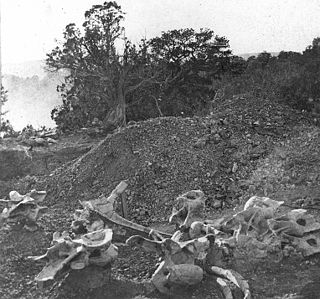
Garden Park is a paleontological site in Fremont County, Colorado, known for its Jurassic dinosaurs and the role the specimens played in the infamous Bone Wars of the late 19th century. Located 10 km (6.2 mi) north of Cañon City, the name originates from the area providing vegetables to the miners at nearby Cripple Creek in the 19th century. Garden Park proper is a triangular valley surrounded by cliffs on the southeast and southwest and by mountains to the north; however, the name is also refers to the dinosaur sites on top and along the cliffs. The dinosaur sites now form the Garden Park Paleontological Resource Area, which is overseen by the Bureau of Land Management.

Euro gold and silver commemorative coins are special euro coins minted and issued by member states of the Eurozone, mainly in gold and silver, although other precious metals are also used in rare occasions. Monaco was one of the first countries allowed to introduced the euro (€) on 1 January 2002, although they are not officially part of the Eurozone. Since then, the Monnaie de Paris in France have been minting both normal issues of Monégasque euro coins, which are intended for circulation, and commemorative euro coins in gold and silver.

The Girl from Monaco is a 2008 French comedy-drama film directed by Anne Fontaine. The film stars Fabrice Luchini, Roschdy Zem, Louise Bourgoin, and Stéphane Audran.

Cape Monaco is a cape which forms the southwest tip of Anvers Island, in the Palmer Archipelago, Antarctica. Gossler Islands and Chukovezer Island are lying respectively 3 km west and 7.2 km north of the cape.

Heathery Burn Cave is a cave near Stanhope, County Durham, England, in which a large collection of Late Bronze Age weapons and tools was discovered and excavated between 1859 and 1872.
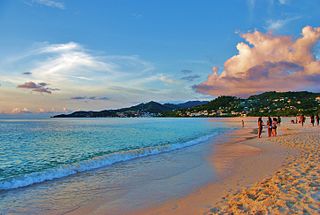
A shore or a shoreline is the fringe of land at the edge of a large body of water, such as an ocean, sea, or lake. In physical oceanography, a shore is the wider fringe that is geologically modified by the action of the body of water past and present, while the beach is at the edge of the shore, representing the intertidal zone where there is one. In contrast to a coast, a shore can border any body of water, while the coast must border an ocean or a sea. Therefore, in that sense, a coast is a type of shore. However, the word "coast" often refers to an area far wider than the shore, often stretching miles into the interior.



















